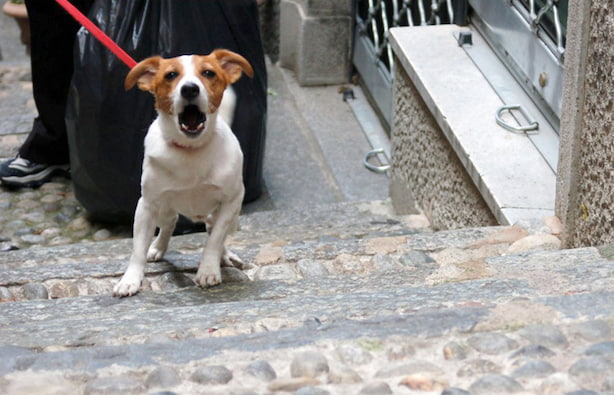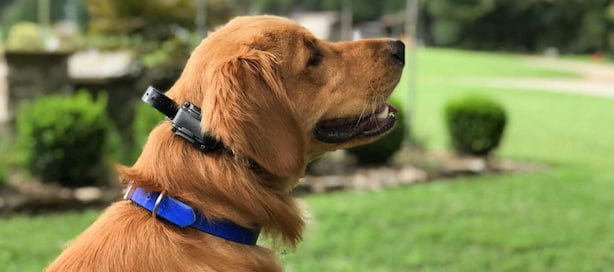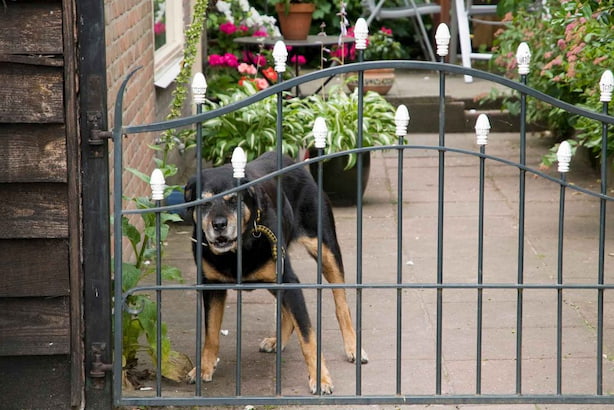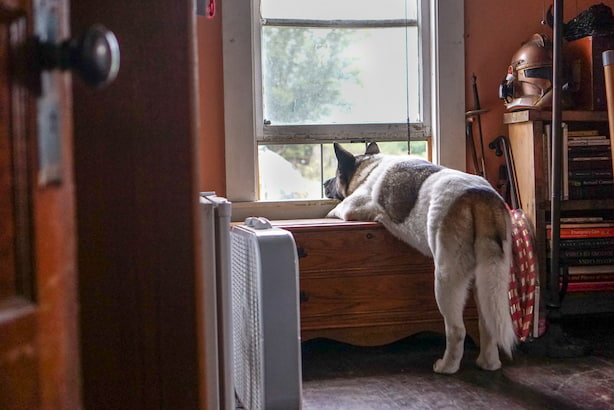5 Efficient and Compassionate Ways to Stop Your Dog From Barking
- Tweet
-
- Pin It
While there are ways to deal with the particularly disruptive barking, it is important to remain realistic, as you will not be able to completely stop your dog from barking given that it’s its instinct to act as your protector and communicate with you. However, with commitment, compassion, and patience, you can achieve tremendous success with cutting down on the excessive noise!
Here are the fundamental processes and rules to remember:
Contents
Step 1: Determine the cause of their barking
Dogs bark and howl for many reasons. They may yap because of excitement, boredom, frustration, and even anxiety. For instance, if your dog hasn’t had enough exercise or isn’t feeling stimulated, it may howl to express boredom or frustration.

So, physical stimulation is crucial, and you could try increasing your dog’s exercise by making their daily walks more entertaining or by spending more time engaging with them indoors or in the yard. Mental stimulation, such as scent activities, training, or interactive puzzle feeders would also be beneficial for reducing this type of barking.
For this, it’s important to consider your pet’s daily routine and see what’s lacking. If they have a lot of time when they’re unoccupied, or if you observe more barking at certain times of the day, these are good opportunities to introduce training and activities. This will also provide insight into why they are being distressed.
Step 2: Consider a citronella collar
According to a study conducted by Cornell University, all dog owners found effective citronella collars for dogs beneficial for reducing or stopping nuisance howling, and many favoured them over electric shock collars since they are a much more compassionate solution. Several feral and pet adoption organisations also use citronella bark collars to control excessive barking. Still, to make sure you apply this solution the right way, experts advise that your dog should not wear a citronella bark collar for more than 12 hours per day. Check the dog’s epidermis daily and clean the neck and muzzle frequently to prevent irritation.
However, keep in mind that anti-bark citronella collars for dogs are still discipline devices that serve as a sort of punishment and are not recommended as the sole solution to a barking problem. This is notably true for fear-, anxiety-, or compulsion-driven barking. For this reason, they function successfully when all other stages of identifying the problem’s root are correctly implemented. In this way, you provide a long-term solution to the issue by relieving your furry best friend of their anxiety, whatever the reason may be.

Step 3: Teach them new ways to pay attention
You may find that your dog begins to howl when they are not receiving the attention they desire. This may consist of physical interaction or playtime. As a proprietor, our natural inclination may be to grant their request or to inform them to be quiet. However, if you give your dog attention when he or she barks, the behaviour will be reinforced.
Even if you consider the attention to be negative, such as shrieking, you are still providing your dog with the attention that they desire in the form of a reaction. Instead, attempt to ignore your dog when it barks for no reason. Maintain silence and avoid eye contact. As much as possible, ignore them entirely and remain still until they cease. You may need patience with this one!
Once they have stopped, praise them calmly and give them the attention they were seeking, which could include a concern, playtime, or a treat. Your dog will eventually realise that howling does not yield the desired results. As part of this, it is a good idea to reward your dog when he or she is naturally silent. At any point during the day when they are calm and silent, give them some of the attention they crave to demonstrate that they do not need to yell to get the affection.
Step 4: Learn how to handle their howling when neighbours pass by
There are two methods to deal with a dog that barks when people walk by the house: training and managing the situation. A simple solution is to block the dog’s view of passers-by through the window or door, but this is not always feasible. You can also intervene and attempt to deflect your dog before it begins to bark. Observing your dog and learning the signs that they are about to howl is a good idea.

As soon as you observe these behaviours, request an action that you can reward instead, such as a sit or a down. Don’t fret if you can’t divert the attention of your dog in time to prevent them from barking. In this situation, it is advisable to teach your dog a recall or “watch me” command.
This will allow you to call them once they begin to howl, and then reward them for performing that action instead. Once you’ve captured your dog’s attention, you can play with them or engage them in another activity to keep them occupied or have them stay in their dog bed.
Step 5: Learn how to deal when they bark at someone knocking
If your dog is barking at the door, he or she may be thrilled to see visitors or attempt to warn them off and protect you. If your dog is trying to defend or alert you, and someone taps on the door but does not enter, your dog will feel rewarded. Effectively teaching your dog to respond differently to the tapping or to perform an action that distracts them from their barking is possible.
For instance, if your dog enjoys toys and fetch activities, you can teach it to grab a favourite toy when the doorbell rings in preparation for a short game of fetch or to simply wait until the person has left or entered the room.

You can also desensitise your dog to pounding sounds. Begin by recording the sound that initiates the reaction. Then, when your dog is at ease, play the noises softly at first, and be sure to reward them if they refrain from barking. Gradually increase the volume of the sound while continuing to reward them for remaining silent. End the session and try again on the following day with the volume marginally reduced if they continue to bark.
Over time, you should be able to increase the volume to the point where your dog associates the sound of knocking with positive things and ultimately stops reacting to it. Remember, if you discover that these tips do not work for your dog, you should speak with your veterinarian who can recommend a qualified behaviourist to assist you.
- Nest and Nurture: How to Pick the Right Whelping Box for Your Litter
Bringing a new litter of puppies into the world...
- May 2, 2024
- Unleash Precision and Performance with Steelmaster’s Versatile Rotary Mills
Australian factories and fabricators use rotary mills for everything...
- April 30, 2024
- Rugged Revamp: Upgrading Your Dirt Bike with High-Quality Aftermarket Plastics for Ultimate Protection and Style
It’s a fact: dirt, motocross, and enduro riders know...
- April 26, 2024
- The Sound of Tradition: An In-Depth Look at the Fender Telecaster Series
In the realm of electric guitars, few instruments hold...
- April 16, 2024
- Professional and Stylish: How to Select the Right Men’s Uniform for Your Business
What kind of picture do you want to present...
- April 9, 2024
- Warehouse Organisation: The Role of Stillages in Streamlining Operations
If you’re a business owner who deals with goods,...
- April 8, 2024






